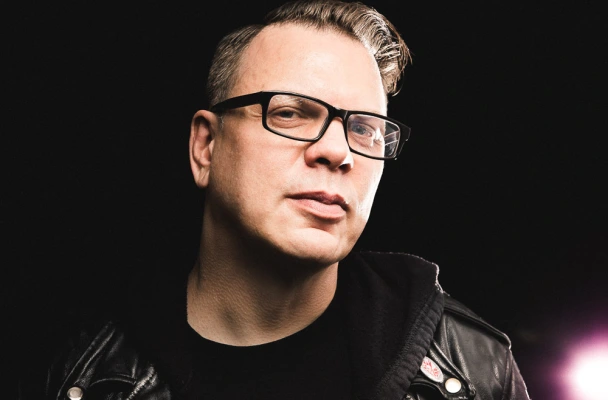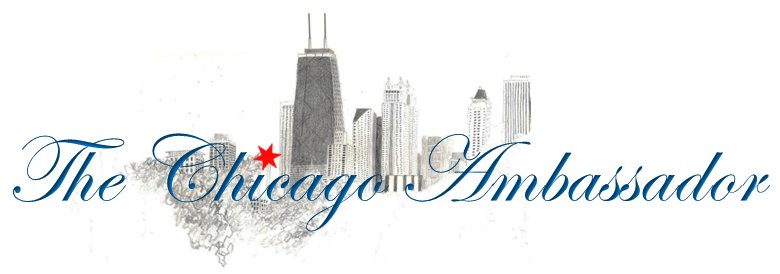Bryan Wendorf – Ringleader of the Chicago Underground Film Festival

Bryan Wendorf. Photo by Joe Mazza.
The Chicago Underground Film Festivall (CUFF) kicks off Wednesday night and runs through Sunday evening at the Logan Theatre in Logan Square. Now in its 24th year, the film fest bills itself as the largest underground film fest in the world. The Chicago Ambassador’s Bob Chiarito recently spoke to Bryan Wendorf, co-creator and artistic director of CUFF about the origins of the festival, how he decides which films make the cut, and what exactly is underground film.
CA) You guys bill the Chicago Underground Film Festival as the longest running underground film fest in the world. Are there a lot of other ones?
WENDORF) There are. When we started in 1994 there was our festival and one in New York that started the same year. For several years those were the only two, and then more started. New York Underground ended in 2008 and that’s when we became the longest running one. There’s a Winnipeg underground film fest; Melbourne and Sydney both have underground film fests; Auckland has one. San Diego. Over the years, different festivals have called themselves underground film fests but tend to program a bit more genre focused, or experimental.
CA) What defines it as “underground”?
WENDORF) That’s always an interesting question. I’m trying deliberately to keep my definition as broad as possible, because I think it’s always changing. What is underground at one time can later get assimilated into the mainstream. I use the example of when Trey Parker and Matt Stone created the characters for South Park, which was 20 years ago, the first cartoon they did was very much an underground film. They created it with no money with literal cartoon cutouts. They sent it out to their friends and then Comedy Central saw it and picked it up and now it’s very much mainstream. That sort of thing happens all the time. When we started our festival we were very influenced by a group of filmmakers in New York who went under the nickname “Cinema of Transgressive.” They were very punk rock and made things on their Super 8 cameras. They were screened in non-traditional venues like rock clubs and were a big influence on us in those early years. John Waters was an underground artist when he started and is very much a edgy mainstream artist now. Over time, that type of underground went by the wayside. We’re constantly looking for the next new thing, whether it’s a new approach to storytelling or other things, anything that’s fresh and new. It is constantly changing and I use the old joke about pornography to describe it — I know it when I see it. To define it as any one thing locks it into something it gets stale. To keep a festival like this going for 24 years, it has to change. If we were showing the same types of films we showed 24 years ago the festival probably would have ran its course and not be as relevant.
CA) Is mainstream success something that is looked down upon or something that you all are trying to attain?
WENDORF) I wouldn’t say its looked down upon. I think every filmmaker has to answer that for themselves. We want to influence popular culture so I’m happy when a filmmaker we feature is discovered and can work with bigger budgets and get wider exposure. I’ve never bought into the notion that mainstream success is something is frowned upon. I think the key is to find that success without compromising your art. If the mainstream catches up to you, you’re not selling out.
CA) You started this film festival with a friend 24 years ago. Can you talk about that?
WENDORF) My friend Jay Bliznick worked together at a small video store in the north suburbs. It was the early 1990s and the peak of the video store ago. The store we worked at prided itself on having a staff that was very well versed in film. We were hardcore film junkies, we watched all types of movies all the time. Jay came up with the idea after attending a horror film convention. There was a magazine published in Detroit called Film Threat that had a very punk rock attitude about film. The publisher would review your film if you sent him a videotape of it. So these were the types of films Jay wanted to show. Initially I was hesitant but eventually came on board. It was well received and we had filmmakers coming in from all over for it. The number of submissions grew every year as well as the size of the audiences. After six years, Jay moved on to do other things and I’ve been in charge of it ever since.
CA)Did you think you’d be doing it 24 years later?
WENDORF) I joke about that and say part of the reason that I was hesitant about the idea when he first approached me with it is that I knew I’d still be doing it 24 years later. I’m glad I did, it’s had struggles and challenges but I think it’s now in a really good position.
CA) The films that make it in — You have the final say?
WENDORF) I make the final programming decisions. We have a committee of people pre-screening work for recommendations that starts shortly after the festival ends. We received about 2,000 films last year for this year’s festival.
CA) How many will be shown this year?
WENDORF) We’ll be showing 103 films.
CA) How many are feature-length?
WENDORF) About half are feature length and half are shorts.
CA) When did you partner with IFP Chicago?
WENDORF) Officially in 2008 but we had a relationship prior to that. I was on the IFP board in the 1990s, they helped to create discussion panels but starting in 2008 they became an official partner. I’m now an employee for IFP running the program for them, which has been great.
CA) And they pick the films you want without interference?
WENDORF) Pretty much, yeah. They keep some oversight on the budget but in terms of the programming they don’t interfere. It’s been a good relationship.
CA) How many people are you expecting at the fest?
WENDORF) Last year we had almost 4,000 and have seen a slight increase every year. It’s great to be at the Logan Theatre in Logan Square.
CA) How long have you been there now?
WENDORF) It’s going to be our fourth year there and it’s been great. We already have some screenings sell out for this year.
CA) To go back to how you pick films, can you describe your criteria? Is there any rhyme or reason?
WENDORF) There’s always a reason. Finding a way to pinpoint that reason is tough. This year the narrative features we are showing all have some quality that is experimental. Some have a mix of non-professional and professional actors. I try to make it a mix of different types of films so we have comedies and dramas, documentaries, some are experimental. About a quarter of the films we are showing this year are from Chicago area filmmakers and the rest are from all around the world.
CA) The event starts Wednesday night and runs through Sunday. What else is going on besides film showings?
WENDORF) Part of my goal is to show adventurous and challenging work that is fun. I don’t want a festival that feels exclusionary, like you need a film degree to appreciate it. Part of that is to have parties after the screenings where filmmakers and the audience can go out together and enjoy themselves. Every night there is some sort of party. Sometimes it’s just a cocktail mixer, other times there is rock bands. We are also doing a night of experimental standup comedy and experimental music. There are a lot of different events like that which is just as important.
The festival will begin Wednesday night with the Chicago premiere of local filmmaker Laura Stewart’s documentary “Drifting Toward the Crescent. It will end Sunday night with the world premiere of Ryan Sarnowski’s “Manlife: The Last of the Lawsonians.” To learn more, click here.
Be sure to “Like” us on Facebook!


Leave a comment